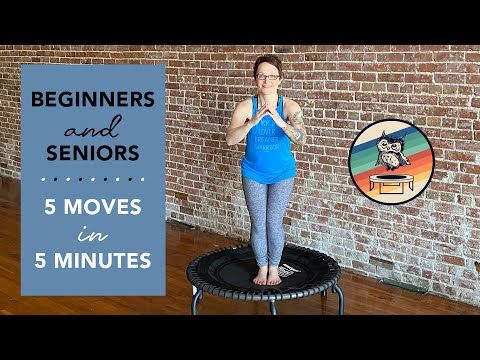Health Benefits of Rebounding: Boosting Your Fitness and Well-being
Rebounding, also known as trampoline exercise, has gained significant popularity in recent years due to its numerous health benefits. This low-impact workout involves bouncing on a mini-trampoline, offering a fun and effective way to improve your overall fitness and well-being. In this article, we will explore the incredible health benefits of rebounding and how it can help you achieve your fitness goals.
Cardiovascular Health
Engaging in regular rebounding sessions can greatly improve your cardiovascular health. As you bounce on the trampoline, your heart rate increases, promoting better blood circulation throughout your body. This cardiovascular workout strengthens your heart muscle, lowers blood pressure, and reduces the risk of heart disease.
Weight Loss and Toning
Rebounding is an excellent exercise for weight loss and toning your body. The constant jumping motion engages multiple muscle groups, including your legs, core, and arms. This full-body workout helps burn calories, shed excess fat, and build lean muscle mass. By incorporating rebounding into your fitness routine, you can achieve a toned and sculpted physique.
Lymphatic System Detoxification
One of the unique benefits of rebounding is its ability to stimulate the lymphatic system. The up-and-down movement while bouncing helps flush out toxins and waste products from your body. This detoxification process strengthens your immune system, improves lymphatic circulation, and enhances your body’s natural ability to fight off infections and diseases.
Improved Balance and Coordination
Regular rebounding exercises can significantly improve your balance and coordination. The unstable surface of the trampoline challenges your body to maintain stability, thus enhancing your proprioception and overall motor skills. This improvement in balance and coordination can have a positive impact on your daily activities and reduce the risk of falls and injuries, especially in older adults.
Stress Relief and Mental Well-being
Engaging in rebounding can be a great stress reliever and mood booster. The rhythmic bouncing motion releases endorphins, the feel-good hormones, which help reduce stress, anxiety, and symptoms of depression. Rebounding also promotes better sleep patterns, increases energy levels, and enhances overall mental well-being.
Joint Health and Injury Prevention
Unlike high-impact exercises like running, rebounding is gentle on your joints while still providing an effective workout. The trampoline’s shock-absorbing surface reduces the impact on your knees, ankles, and spine, minimizing the risk of joint injuries. This makes rebounding a suitable exercise option for individuals with joint pain, arthritis, or those recovering from injuries.
Increased Bone Density
Rebounding is a weight-bearing exercise that helps increase bone density and prevent osteoporosis. The repetitive jumping action stimulates bone cells, promoting the production of new bone tissue. Regular rebounding sessions can strengthen your bones, reduce the risk of fractures, and improve overall bone health.

Rebounding offers a wide range of health benefits, making it an ideal exercise for people of all ages and fitness levels. From improving cardiovascular health and aiding in weight loss to enhancing balance and mental well-being, rebounding is a versatile workout that can transform your fitness journey. So, grab a mini-trampoline and bounce your way to a healthier and happier life! the
Frequently Asked Questions about Health Benefits of Rebounding
1. What is rebounding?
Rebounding is a form of exercise that involves jumping on a mini trampoline.
2. What are the health benefits of rebounding?
Rebounding offers various health benefits such as improved cardiovascular health, increased lymphatic circulation, enhanced balance and coordination, and strengthened muscles.
3. Can rebounding help with weight loss?
Yes, rebounding can aid in weight loss as it is a high-intensity exercise that burns calories and boosts metabolism.
4. Does rebounding help improve bone density?
Rebounding is a weight-bearing exercise that can help improve bone density, making it beneficial for individuals at risk of osteoporosis.
5. How does rebounding benefit the lymphatic system?
Rebounding stimulates the lymphatic system, helping to remove toxins and waste from the body, thereby strengthening the immune system.
6. Can rebounding help reduce cellulite?
Regular rebounding can help reduce the appearance of cellulite by improving blood circulation and lymphatic drainage, which aids in the removal of toxins and fat deposits.
7. Is rebounding suitable for individuals with joint problems?
Rebounding is a low-impact exercise that puts less stress on joints compared to activities like running, making it suitable for individuals with joint problems or those recovering from injuries.
8. How often should I rebound to experience health benefits?
To experience health benefits, it is recommended to rebound for at least 15-20 minutes, 3-5 times a week.
9. Can rebounding help improve mental health?
Yes, rebounding can have positive effects on mental health by reducing stress, improving mood, and increasing overall energy levels.
10. Are there any precautions to consider before starting rebounding?
Individuals with certain health conditions or injuries should consult with their healthcare provider before starting rebounding. It is also important to use a high-quality rebounder and follow proper techniques to minimize the risk of injury.




